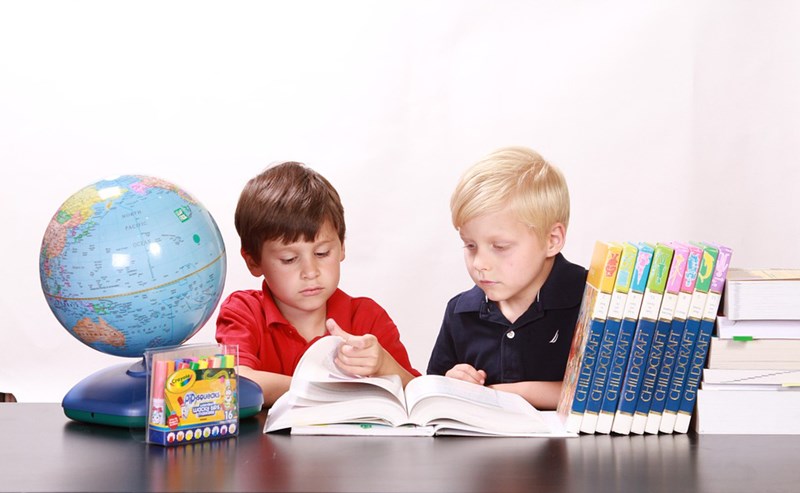Issue 96
Term 1 2016
The importance of multicultural literature
Marianne Grasso discusses the importance of multicultural literature in the school library fiction collection, providing examples of books and digital content that promote multicultural perspectives and encourage global awareness.

Australian primary schools are more culturally diverse now than ever before. By including multicultural literature in the school library fiction collection, teacher librarians ensure they provide their students with texts that represent the culturally diverse classrooms and home environments in this country, and those across the globe. With recent global events, it has become increasingly important that students do not become ethnocentric. Exposure to a variety of multicultural literature can assist in breaking down cultural barriers.
What value does multicultural literature add to the school library fiction collection?
Multicultural literature serves as a powerful tool in enabling students to gain a better understanding of both their own culture and the cultures of others. Through this deeper knowledge, relationships can be strengthened, bridging the gap between students from diverse cultural backgrounds (Hseu & Hetzel, 2000). As students of the 21st century are global participants, it is important that they possess cultural sensitivity. Through extensive research, Norton (2009) has discovered that when students can relate global events to the themes, conflicts and characterisations found in multicultural literature, it helps them to better understand current world issues. Students therefore develop greater cognitive skills as they learn to engage with and critically evaluate the texts that they read.
Suzanne Evans (2010) conducted research on critical literacy using a range of multicultural picture books. Her aim was to determine whether student perspectives on diversity and the acceptance of others altered once they were exposed to multicultural texts. Evans concluded that exposure to multicultural literature increased students’ awareness of the various social practices, values and belief systems of other cultures. These themes are a major focus in the Australian Curriculum, with a general capability strand dedicated to intercultural understanding, which is incorporated throughout each of the key learning areas.
Promotes empathy and unity
Multicultural literature fosters positive self-esteem and prevents students from feeling isolated. It has the ability to nurture respect, empathy and acceptance among all students (Steiner et al, 2008). Whoever You Are (Fox, 1997) is an older publication that illustrates perfectly how multicultural literature can promote unity among different cultures. The story highlights the fact that all children feel the same emotions no matter where they live in the world, what language they speak, or how they look. It suggests that although people have many differences, there are common traits that unite us.
Another text that focuses on commonalities is Mirror, written by Jeannie Baker (2010). The design of this book is unique, as two storylines sit side by side and are to be read simultaneously. This picture book is about the day in the life of two boys: one who lives in Australia, and the other in Morocco. It eloquently reveals the external differences and inner similarities that define their lives. This book teaches children that they should not be fearful of those who may seem different to them, as their daily lives and routines may be very much the same.
Promotes cross-cultural friendship
Multicultural literature promotes the interaction of children across differing ethnic backgrounds (Steiner et al., 2008). Stories portraying cultural diversity can foster the belief that race is not a barrier, but rather a contribution to the beauty of our multicultural world. This ideal is portrayed in Kobald’s My Two Blankets (2014). A young girl named Cartwheel relocates to a westernised country to escape the war that is occurring in her homeland. She feels lost and lonely until she meets a young girl in the park. Over time their friendship develops and the young girl helps Cartwheel to understand her new world.
This theme is mirrored in Just One Wish, a lovely story by Sally Rippin (2009) about overcoming diversity. Penny, a new arrival to Australia, initially struggles with the English language and feels alienated until she befriends her hearingimpaired art teacher, Mr Whitehorse.
Helps students look critically at the world
Multicultural literature can help students develop global awareness by introducing them to current cultural issues. When students vicariously experience the feelings and emotions of others through literature, they are encouraged to look critically at the world and gain a greater understanding of the global community (Monobe & Son, 2014).
Texts such as Ziba Came on a Boat (Lofthouse, 2007), The Little Refugee (Do & Do, 2011) and Mahtab’s Story (Gleeson, 2008) are representative of actual events. The main character in each story is a refugee who immigrates to Australia with their family via an old, overcrowded fishing boat. These books reveal the hardships that refugees often experience when seeking a place of safety. They allow students to reflect upon and critically analyse the issue of asylum seekers and the idea of a fairer community.
John Marsden portrays the above issues in a unique and thought-provoking manner in his book Home and Away (2008). This compelling story is about a typical Australian family who must flee their country when it is ravaged by war. This story presents a complete role reversal, as it is Australians who are being displaced. This text forces students to think critically and consider global issues from a different perspective.
Encourages identity formation
Multicultural literature can also assist students with their identity formation (Hseu & Hetzel, 2000). Identity formation is important in the social development of all children, as it gives them a sense of belonging and acceptance in society. Inclusion of multicultural literature in library collections confirm that the beliefs and experiences of minority students are valued (Steiner, 1998). When students see themselves reflected in the pages of literature, they are more likely to engage with a text. Smith’s (1995) case study confirms this, revealing that African- American students prefer to read texts they can relate to culturally, increasing their interest in reading. Familiar concepts in multicultural literature help to build security, familiarity, and confidence, which can lead to an improvement in student learning (Agosto, 2007).
What is the role of the teacher librarian?
There are important characteristics that teacher librarians should consider when selecting multicultural literature to include in their school library fiction collection. Firstly, cultural contexts should be accurately depicted in the books by the presentation of correct and current information. It is important that teacher librarians find texts that portray the life of unique individuals and avoid stories that reinforce stereotypes. The dialogue in the book should also be considered, as it should accurately represent culturally-specific oral traditions (Landt, 2006). Teacher librarians should also consider the power play within texts to ensure subservient roles between cultural groups are not illustrated.
It is important to ensure that multicultural literature is not isolated, but incorporated in library activities and throughout the library program. ASLA & ALIA (2004) suggest that an effective teacher librarian provides professional development opportunities for other teaching staff. By working together to organise units that include culturally-diverse literature, teacher librarians and classroom teachers ensure that multicultural themes are woven throughout the curriculum. Once multicultural literature is seen as an integral component of the curriculum, libraries and classrooms can become safe arenas for open discussions on culturally sensitive topics (Dietrich & Ralph, 1995).
Online digital resources
There are numerous online resources that can be used to engage students and extend their literary experiences. The International Children’s Digital Library provides free access to quality digital multicultural and multilingual texts from around the world. This resource offers a great extension to the school library fiction collection, especially for bilingual students.
And then I was a refugee… is an interactive tool that explores real-life scenarios faced by refugees. The aim of this application is for students to discover the refugee experience, demonstrating the crisis experienced by millions of people every year. Along their journey, students must make critical choices and learn about the results of their actions.
Conclusion
Creating a culturally diverse library collection and instilling its use throughout the school curriculum helps to build a school community that is supportive, empathetic and accepting of others. Multicultural literature creates a sense of belonging, forging a connection between home and school environments, and across cultures. Multicultural literature serves many purposes, but its greatest accomplishment is its ability to bring people closer together, regardless of culture and ethnicity.
References
- Agosto, D. E. (2007). Building a multicultural school library: issues and challenges. Teacher Librarian, 34(3), 27-31.
- Australian School Library Association [ASLA] & Australian Library and Information Association [ALIA]. (2004). Library standards of professional excellence for teacher librarians. http://www.asla.org.au/policy/standards.aspx.
- Dietrich, D., & Ralph, K. (1995). Crossing Borders: Multicultural Literature in the Classroom. The Journal of Educatioal Issues of Language Minority Students, 15, 1-8.
- Evans, S. (2010). The Role of Multicultural Literature Interactive Read-Alouds on Student Perspectives Toward Diversity. Journal of Research in Innovative Teaching, 3(1), 88-100.
- Hseu, M., & Hetzel, J. (2000). Bridging the Cultural Divide Through Multicultural Children’s Literature. http://buddies.org/articles/Literature.html.
- Landt, S. M. (2006). Multicultural literature and young adolescents: A kaleidoscope of opportunity. Journal of Adolescent & Adult Literacy, 49(8), 690-697.
- Monobe, G., & Son, E. H. (2014). Using Children’s Literature and Drama to Explore Children’s Lives in the Context of Global Conflicts. The Social Studies, 105(2), 69-74.
- Norton, D. E. (2009). Multicultural children’s literature: through the eyes of many children (3rd ed.). Boston: Allyn & Bacon/Pearson.
- Smith, E. (1995). Anchored in our literature: Students responding to African American Literature. Language Arts, 72(8), 571-574.
- Steiner, S. F. (1998). Who Belongs Here? Portraying American identity in children’s picture books. Multicultural Review, 7(2), 20-27.
- Steiner, S. F., Nash, C. P., & Chase, M. (2008). Multicultural Literature That Brings People Together. Reading Teacher, 62(1), 88-92.
Image credits
- CC0 Public Domain. Image sourced from www.pixabay.com
